LONDON (AP) — Three players were sent off in the space of 18 minutes near the end of a Premier League game between Crystal Palace and Brighton on Saturday.
Palace was reduced to nine men when Eddie Nketiah (78th minute) and Marc Guehi (90th) picked up second yellow cards.
Brighton center back Jan Paul van Hecke was then sent off in the sixth minute of stoppage time, also for two yellow cards.
Palace held on to win 2-1 after nearly 14 minutes of stoppage time.
AP soccer: https://apnews.com/hub/soccer

Referee Anthony Taylor shows Crystal Palace's Eddie Nketiah, left a red card, during the English Premier League soccer match between Crystal Palace and Brighton and Hove Albion, at Selhurst Park, London, Saturday April 5, 2025. (James Manning/PA via AP)
KAWASAKI, Japan (AP) — Seafood lovers know the fatty marbling is what makes tuna sashimi and sushi so tasty, so for the industry, it's the fish's level of fattiness that's used to judge its quality and pricing.
Usually, several people assess how fatty a tuna is by cutting the tail with a giant saw-like knife, an operation that takes about 60 seconds per fish.
But now a machine called Sonofai uses ultrasound waves to do the job in 12 seconds, operated by a person without prior knowledge of how to carve fish.
Fujitsu, the Japanese company behind the technology, invited reporters this week for a demonstration of Sonofai, a word blended from “sono” referring to “sound,” “f” for Fujitsu, and “ai,” or artificial intelligence. The name refers to its components but also stands for “son of AI.”
A conveyor belt transports a whole frozen tuna fish, about a meter (3 feet) in size, into a machine that beams ultrasound waves. Sensors pick up the waves to draw a zigzagging diagram on a screen to indicate the fish’s fattiness.
Fatty meat absorbs fewer sound waves than lean meat and AI sorts real data from misleading “noise,” or irregularities.
Hisashi Ishida, president of Sonofai, the startup behind the technology, who also heads Ishida Tec Co., which makes food-manufacturing equipment, says it’s safer, more sanitary and efficient.
“Fatty fish tastes good, feels better on your tongue and is called ‘toro,’ ” he said. “Overseas needs are growing because sushi culture is now appreciated around the world.”
Beef has a grading system for fat and expected flavor, but being able to gauge the quality of tuna is new, according to Hideto Okada, who oversees AI at Fujitsu.
Sonofai uses the same technology as medical ultrasound scans where high-frequency inaudible sound waves are absorbed or bounced back to create video-like images of things that aren’t visible, like a fetus inside a mother’s womb. Unlike the CT scan or X-ray, it doesn’t use radiation, which can harm tissue.
Chris Edwards, a medical doctor and professor at Queensland University of Technology, who trains sonographers, or health-care professionals who specialize in ultrasound, has studied how ultrasound can be used to see the fattiness of a human liver, linked to diabetes and other health problems.
“They can look at one fish and compare it to another and say ‘Oh, that one’s definitely got more fat than that one,’” he told The Associated Press in an interview.
But Sonofai won't be at your neighborhood sushi chef.
Fish-processing outfits and fishing organizations are the likely buyers. The machine is set to go on sale in June for about 30 million yen ($207,000) each, at first in Japan but expanding to the U.S. and other places later. They'll also work on future upgrades to test for freshness, firmness and other characteristics of tuna and other fish varieties.
Yuri Kageyama is on Threads: https://www.threads.net/@yurikageyama

A stall sells tuna sushi sets at Tsukiji market in Tokyo Thursday, April 10, 2025. (AP Photo/Ayaka McGill)
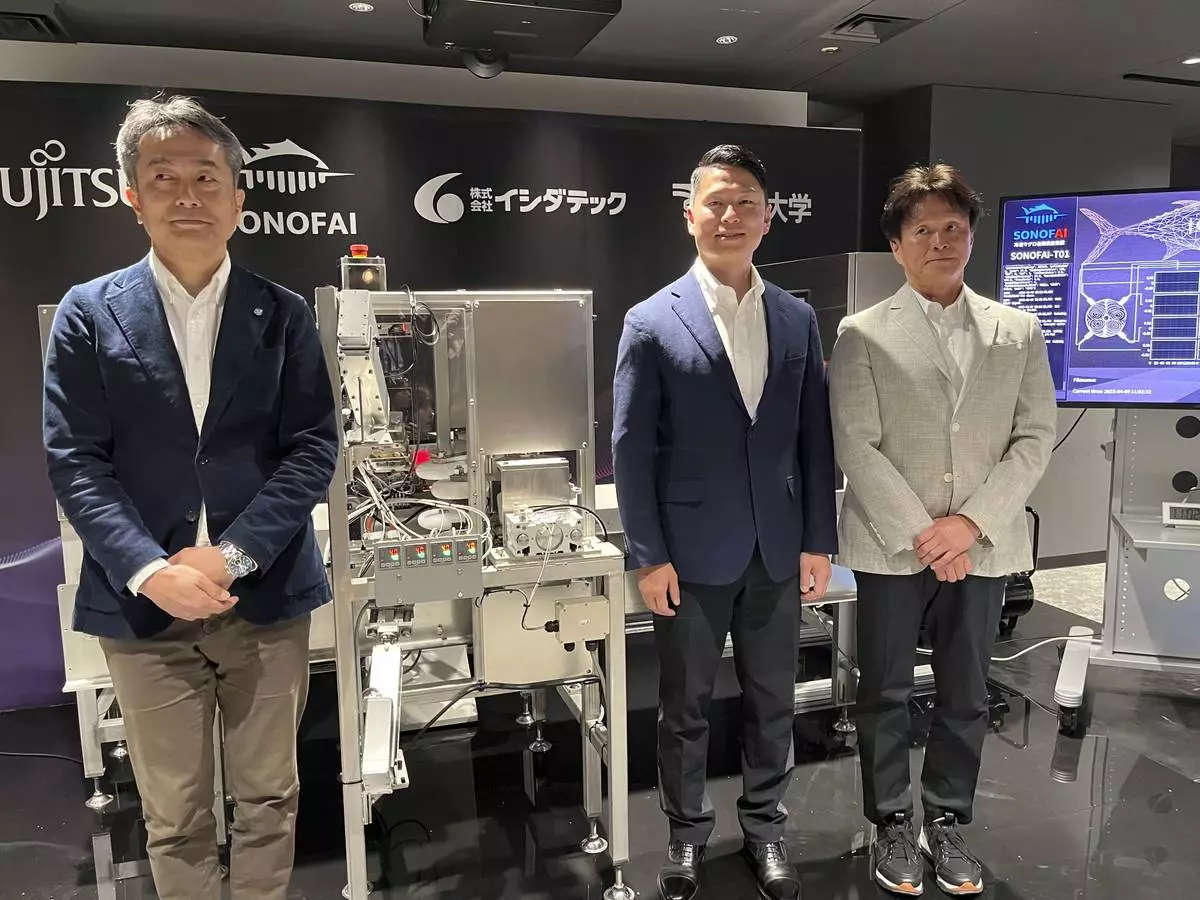
From left, Hideto Okada, a Fujitsu official in charge of AI, Hisashi Ishida, the head of startup Sonofai and Ishida Tec, and Keiichi Goto, professor at Tokai University pose in front of a machine called Sonofai, at a Fujitsu facility in Kawasaki, Japan Wednesday, April 9, 2025. (AP Photo/Yuri Kageyama)

Customers look to buy tuna sushi meals at a market in Tokyo, Japan, Thursday, April 10, 2025. (AP Photo/Ayaka McGill)
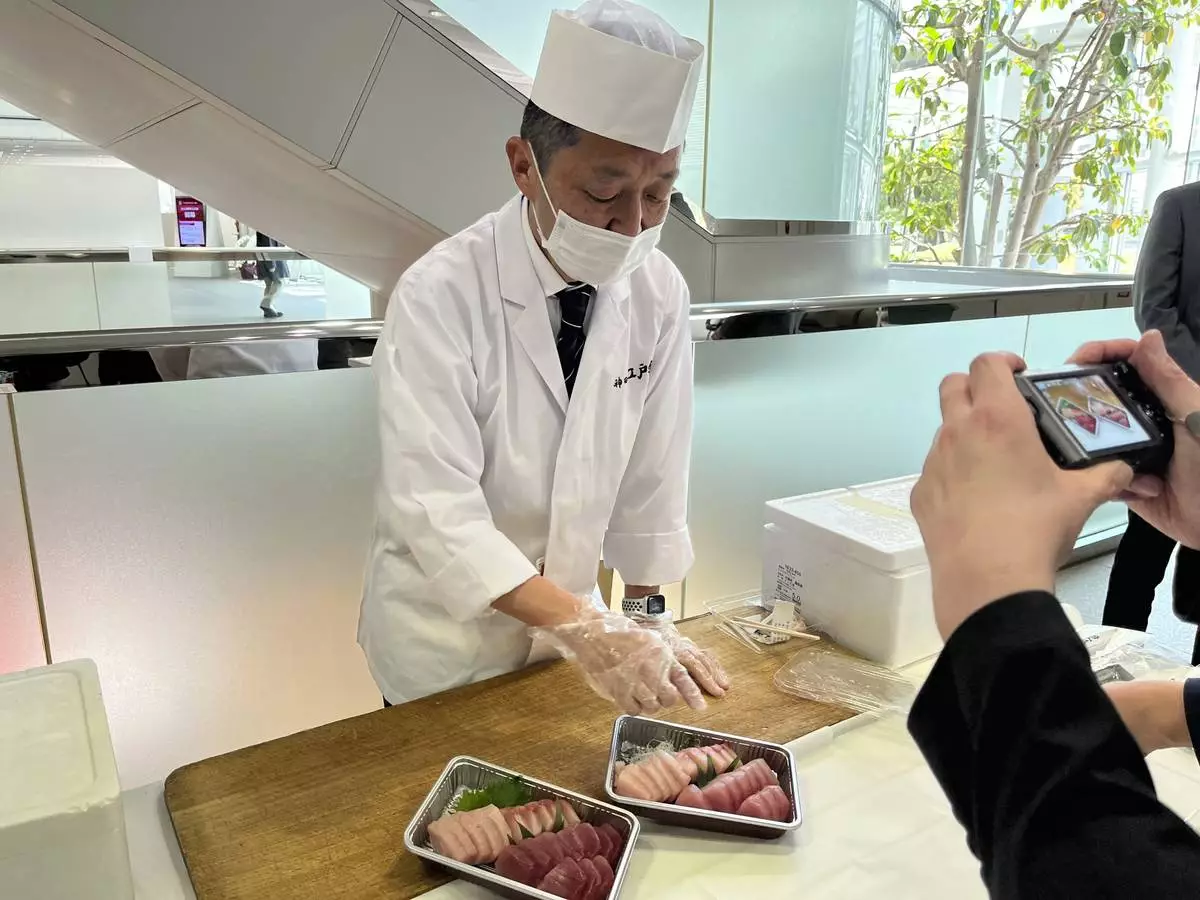
Sushi chef Junichi Kurita demonstrates how the fatty tuna looks different from the leaner kind, and serves it with soy sauce and wasabi relish to reporters April 9, 2025 at a Fujitsu facility in Kawasaki, outside Tokyo. (AP Photo/Yuri Kageyama)
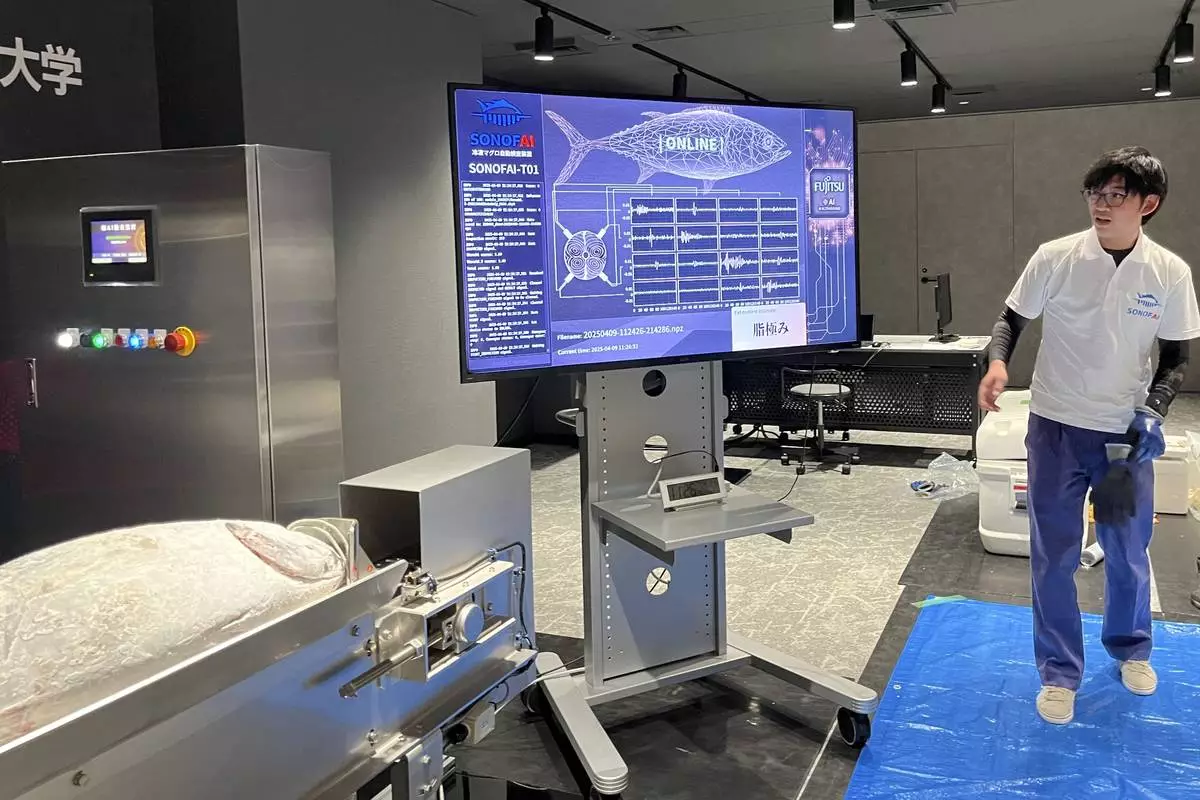
The special machine shown by Fujitsu relays the results of the sound waves beamed on a tuna fish to assess its fattiness shows up on the screen at a Fujitsu facility in Kawasaki, Japan Wednesday, April 9, 2025. (AP Photo/Yuri Kageyama)
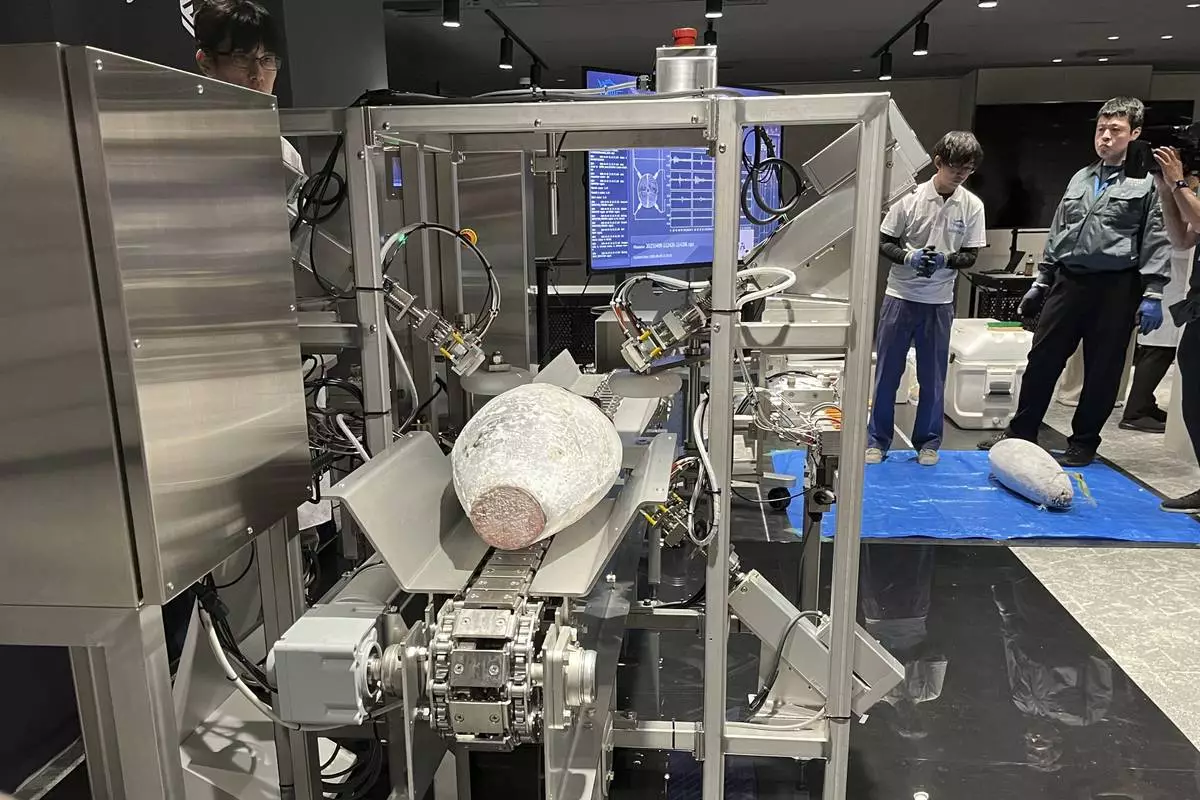
Tuna goes into a special machine called Sonofai that can detect the amount of fattiness in the fish meat by using ultrasound, sensors and AI at a Fujitsu facility in Kawasaki, Japan Wednesday, April 9, 2025. (AP Photo/Yuri Kageyama)
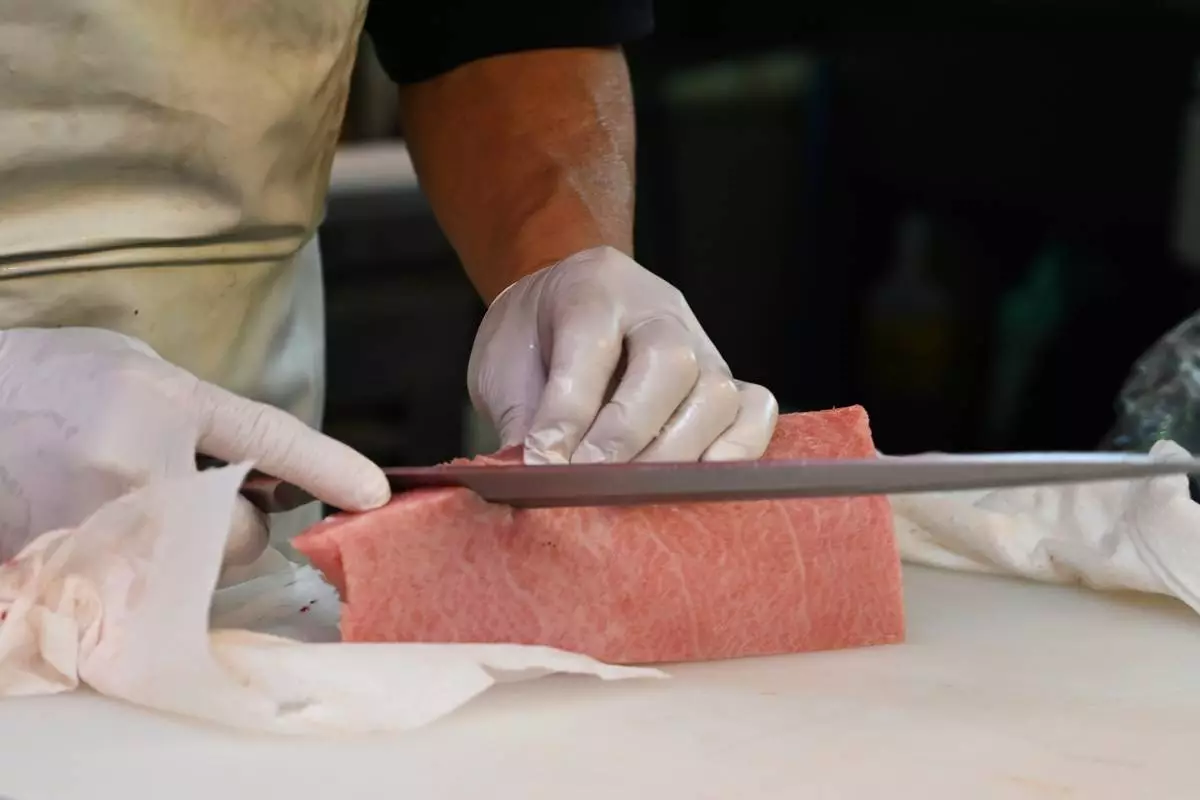
A knife cuts into a fatty cut of tuna at a market in Tokyo Thursday, April 10, 2025. (AP Photo/Ayaka McGill)
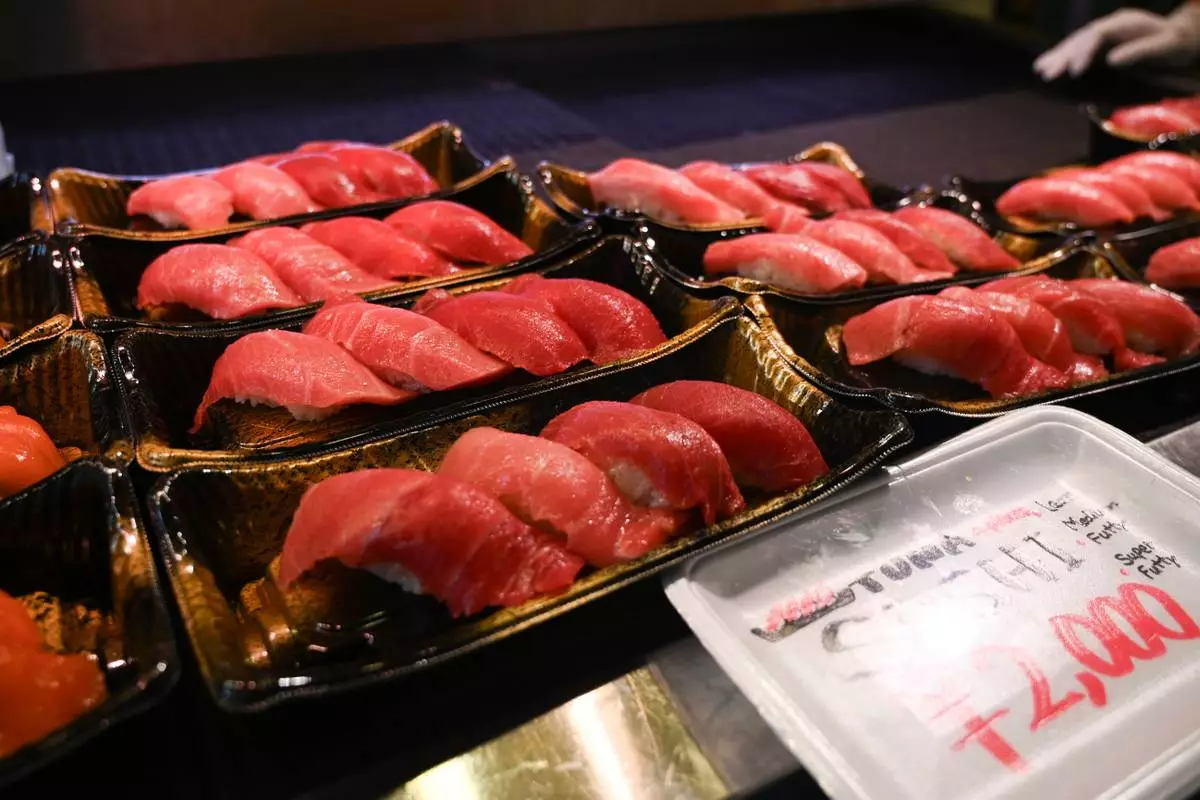
A display shows tuna sushi sets being sold at a market stall in Tokyo, Japan, Thursday, April 10, 2025. (AP Photo/Ayaka McGill)





























































